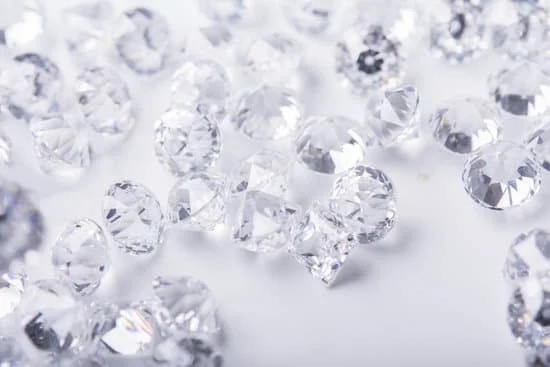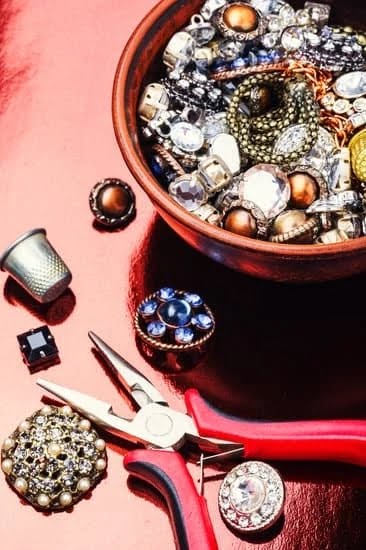The history of mourning jewelry dates back to ancient times, serving as a tangible way for individuals to honor and remember their departed loved ones. This unique form of jewelry has evolved over the years, from its early origins to its enduring significance in contemporary culture. In this article, we will explore the fascinating history, symbolism, and traditions surrounding mourning jewelry, shedding light on its timeless legacy.
Mourning jewelry holds a special place in the realm of sentimental and commemorative accessories. From ancient civilizations to the Victorian era, this type of jewelry has been intricately intertwined with rituals of grieving and remembrance. Understanding the origins of mourning jewelry provides valuable insight into its cultural significance and evolution over time.
Beyond its historical roots, mourning jewelry is laden with symbolism and meaning. Each piece carries with it a powerful narrative, often infused with emotions of loss, love, and memory. Whether crafted from black jet or adorned with intricate hairwork, the materials and techniques used in mourning jewelry play a pivotal role in conveying these heartfelt sentiments.
Throughout this article, we will delve into the diverse traditions surrounding mourning jewelry across different cultures and explore notable examples from various periods in history. Additionally, we will consider the ways in which mourning jewelry continues to inspire contemporary design and appeal to collectors today. Join us on this journey through the captivating world of mourning jewelry as we uncover its enduring legacy.
The Origins of Mourning Jewelry
Mourning jewelry has a long and rich history that spans various cultures and time periods. The practice of wearing items of mourning jewelry dates back to ancient times, with evidence of its use found in civilizations such as the Egyptians, Greeks, and Romans. These early pieces often took the form of simple amulets or pendants containing symbols of death and remembrance.
However, it was during the Victorian era that mourning jewelry reached the height of its popularity and significance. Following the death of Prince Albert in 1861, Queen Victoria entered a period of intense mourning, setting the stage for a cultural shift towards elaborate and intricate mourning rituals. This heavily influenced the production and consumption of mourning jewelry during this time, with elaborate pieces being made using materials such as jet, onyx, and black enamel.
The Victorian era also saw the introduction of hairwork into mourning jewelry, where locks of a deceased loved one’s hair were woven into intricate designs or set behind glass in brooches, rings, or pendants. This deeply personal and sentimental aspect added an extra layer of emotional significance to mourning jewelry during this period. As such, these pieces served not only as tokens of remembrance but also as tangible connections to lost loved ones.
Given its widespread availability and stylistic range during this period, it comes as no surprise that antique Victorian mourning jewelry remains highly sought after by collectors today. Its historical significance coupled with its timeless aesthetic appeal makes it a valuable addition to any collection specializing in antique jewelry.
| Aspect | Data |
|---|---|
| Earliest evidence of use | Ancient civilizations such as Egyptians, Greeks, and Romans |
| Materials popular during Victorian era | Jet, onyx, black enamel |
| Significance of hairwork in Victorian mourning jewelry | Added personal connection to lost loved ones |
Symbolism and Meaning in Mourning Jewelry
Mourning jewelry has been used throughout history as a way for people to commemorate and remember their loved ones. The practice of wearing jewelry to mourn the deceased dates back to ancient times, where it was common in many cultures. From the ancient Egyptians to the Romans and Greeks, mourning jewelry has been a significant part of human history.
During the Victorian era, mourning jewelry reached its peak in terms of popularity and significance. Queen Victoria’s prolonged period of mourning after the death of her husband, Prince Albert, set the stage for an entire culture of mourning that included strict etiquette on what to wear and for how long. Mourning jewelry during this time often incorporated black materials such as jet, onyx, or black enamel, symbolizing grief and loss.
The symbolism and meaning behind mourning jewelry are deeply rooted in expressing grief and remembrance. Common motifs found in mourning jewelry include weeping willows, urns, crosses, and other religious symbols.
These pieces were not only worn as a sign of respect for the departed but also served as a way for the wearer to publicly display their emotions and bond with others who shared their sorrow. The use of unique materials such as human hair in mourning jewelry added a personal touch, creating an intimate connection between the wearer and the deceased.
| History of Mourning Jewelry | Section: Symbolism and Meaning in Mourning Jewelry |
|---|---|
| Mourning jewelry dates back to ancient times | Victorian era popularized mourning jewelry |
| Mourning jewelry represents grief and remembrance | Common motifs include weeping willows and crosses |
Materials and Techniques Used in Mourning Jewelry
Mourning jewelry has been crafted using a variety of materials and techniques throughout history, each reflecting the cultural and societal beliefs of the time. From ancient times to the Victorian era, mourning jewelry has evolved in terms of materials used and the techniques employed in its creation.
Materials Used
In ancient times, mourning jewelry was often made from materials such as jet, a type of lignite that can be polished to a high shine. During the Victorian era, mourning jewelry saw an increase in popularity, leading to the use of materials such as black onyx, enamel, glass, and hair. Hairwork became particularly significant during this time, with intricate designs made from a loved one’s hair being incorporated into the pieces.
Techniques Employed
The techniques used in creating mourning jewelry have also varied over time. In ancient Egypt, for example, artisans utilized carving and polishing techniques to create intricate designs on jet and other materials. During the Victorian era, hairwork became a popular technique, with skilled artisans weaving hair into elaborate designs that conveyed messages of love and remembrance.
As society progressed into the modern era, advancements in technology allowed for new techniques to be employed in the creation of mourning jewelry. Today, artisans may use laser cutting or 3D printing to create unique and personalized pieces that honor the tradition of mourning jewelry while incorporating contemporary design elements.
Notable Examples and Famous Pieces of Mourning Jewelry
Mourning Jewelry has a rich and fascinating history, with countless notable examples and famous pieces that have captured the attention of collectors and enthusiasts for generations. From ancient times to the Victorian era, these pieces have served as a tangible expression of grief and remembrance. Here are some remarkable examples of mourning jewelry that have left an indelible mark on the history of this art form:
- The Mary Queen of Scots Memorial Ring: This iconic piece of mourning jewelry is a stunning example of the use of symbolism and intricate craftsmanship in memorializing a loved one. The ring features a hidden compartment containing a miniature portrait of Mary Queen of Scots, surrounded by ornate gold filigree work and enamel detailing.
- The Hairwork Bracelet: During the 19th century, it was common for individuals to incorporate strands of hair from the deceased into their mourning jewelry as a deeply personal and sentimental tribute. One exceptional example is a hairwork bracelet commissioned by Queen Victoria after the death of her beloved Prince Albert. The bracelet showcases an elaborate design crafted from woven strands of hair, adorned with precious gems and inscribed with symbols of love and loss.
- The Whitby Jet Brooch: Whitby Jet became immensely popular during the Victorian era for its intense black color and ease with which it could be carved into intricate shapes. One notable example is the Whitby Jet brooch worn by Queen Victoria after Prince Albert’s passing, setting off a fashion trend for jet mourning jewelry throughout England.
These iconic pieces serve as powerful reminders not only of the enduring legacy of mourning jewelry but also as testaments to the profound emotional connections that these objects represent throughout history. Whether through intricate hairwork, symbolic motifs, or precious materials, each piece tells a poignant story of love, loss, and remembrance.
Mourning Jewelry Traditions Around the World
Mourning jewelry has been a common practice across many different cultures and traditions around the world. While the styles and materials may vary, the sentiment behind mourning jewelry remains consistent – to honor and remember loved ones who have passed away. Different cultures have their own unique customs and traditions when it comes to mourning jewelry, reflecting their beliefs and values surrounding grief and remembrance.
In ancient Rome, mourners would wear lockets containing a portrait or a lock of hair from the deceased as a way to keep their memory close. This practice continued throughout the Middle Ages in Europe, where mourning rings with inscriptions or symbols of death were commonly worn. In some Asian cultures, mourning jewelry may include beads or amulets that are believed to protect the wearer from negative energy during the grieving process.
In more recent history, during the Victorian era in England, mourning jewelry became especially elaborate and ornate. Black jet was often used in intricate designs, and pieces were sometimes adorned with miniature portraits of the deceased. In Mexico, on the Day of the Dead (Dia de los Muertos), families create elaborate altars with offerings of food, drinks, and sometimes personal items including jewelry in honor of their departed loved ones.
The history of mourning jewelry is rich and diverse, with each culture contributing its own unique practices and traditions to this enduring form of remembrance.
Mourning Jewelry in Contemporary Culture
In today’s society, the tradition of mourning jewelry has evolved to reflect modern attitudes towards grief and remembrance. While the practice of wearing jewelry to honor a loved one’s memory may not be as prevalent as it once was, there is still a significant place for mourning jewelry in contemporary culture.
Personalized and Customized Designs
One aspect of mourning jewelry that has gained popularity in recent years is the creation of personalized and customized designs. Many individuals seek out artisans who can create unique pieces that incorporate elements that hold personal significance, such as birthstones, initials, or other symbols of the deceased.
Alternative Materials and Styles
Contemporary mourning jewelry also encompasses a wider range of materials and styles than traditional pieces. While black jet and enamel were commonly used in Victorian mourning jewelry, modern designers may incorporate different gemstones, metals, and non-traditional materials into their pieces. Additionally, some individuals prefer minimalist or modern designs that subtly reference the concept of remembrance without being overtly funereal.
Memorialization in Artisanal Jewelry
Artisanal jewelers have played a key role in reviving the tradition of mourning jewelry by infusing it with contemporary sensibilities. These designers often create pieces that serve as meaningful memorials for loved ones, whether through incorporating ashes or other mementos into the jewelry itself or by crafting unique designs that capture the essence of the individual being honored.
As society continues to evolve, so too will the ways in which we honor and remember our loved ones through jewelry. The enduring legacy of mourning jewelry remains an important part of contemporary culture, providing comfort, solace, and a tangible connection to those we have lost.
Collecting and Caring for Mourning Jewelry
Mourning jewelry holds an important place in history, and for those who collect such pieces, it is essential to understand how to properly care for and preserve these unique and meaningful items. Here are some tips and advice for collecting and caring for mourning jewelry:
- Proper Storage: When not being worn, mourning jewelry should be stored carefully to prevent damage. Consider storing pieces in a jewelry box with individual compartments or in acid-free tissue paper to avoid scratches or tarnishing.
- Gentle Cleaning: It’s important to clean mourning jewelry regularly but gently. Use a soft, lint-free cloth to wipe away any dust or dirt. For more stubborn stains, consider using a mild soap solution and a soft brush, but always be gentle to avoid damaging the piece.
- Avoid Harsh Chemicals: Mourning jewelry is often made with delicate materials such as jet, pearls, or hair. Avoid exposing these materials to harsh chemicals or cleaning solutions, as they can cause irreversible damage.
- Professional Restoration: If you have antique mourning jewelry that is showing signs of wear or damage, it’s best to consult a professional jeweler who specializes in antique restoration. Attempting DIY repairs on valuable pieces can potentially diminish their value.
- Documentation: For collectors, keeping detailed records of each piece of mourning jewelry can be invaluable. Note the history of each piece, including any known provenance or previous owners. This documentation can help maintain the historical significance of these items and may also be important for insurance purposes.
Caring for mourning jewelry is not only about preserving its physical appearance but also about maintaining its historical significance and meaning. These tips and advice can help collectors ensure that their pieces remain beautiful and meaningful for generations to come while preserving the history of mourning jewelry.
Conclusion
In conclusion, the history of mourning jewelry is a fascinating journey that spans across cultures and centuries. From its origins in ancient times to its peak during the Victorian era, mourning jewelry has been a symbol of remembrance, love, and loss. The symbolism and meaning behind these pieces reflect the customs and traditions of different societies, making them not just beautiful accessories, but also a window into the past.
The materials and techniques used in mourning jewelry further highlight the craftsmanship and artistry of artisans who created these pieces with great care and attention to detail. From hairwork to black enamel, each element adds to the richness of mourning jewelry and its place in history.
Today, mourning jewelry continues to be cherished by collectors and enthusiasts who value its historical significance and artistic beauty. As we look back on the enduring legacy of mourning jewelry, we can appreciate how it has transcended time and cultural boundaries, serving as a tangible link to our shared human experience of grief and love.
Whether as heirlooms or museum pieces, these artifacts continue to evoke emotions and resonate with those who honor the tradition of remembering their loved ones through these timeless treasures.
Frequently Asked Questions
What Jewelry Symbolizes Grief?
Jewelry that symbolizes grief often includes pieces such as tear-shaped pendants, lockets containing a loved one’s hair or ashes, and specific gemstones like black onyx or dark-colored pearls. These items can serve as tangible reminders of lost loved ones.
What Is the Tradition of Mourning Rings?
The tradition of mourning rings dates back centuries, with origins in ancient Rome and Egypt. These rings were often worn by the bereaved to memorialize the deceased, featuring designs such as skulls, coffins, or initials of the departed. They served as a visible symbol of mourning.
What Is the History of Memorial Jewelry?
Memorial jewelry has a rich history dating back to the Victorian era when it became popular to incorporate strands of a deceased person’s hair into jewelry pieces. This trend continued into the Edwardian era and beyond, evolving to include other mementos such as photos or inscriptions to honor and remember those who have passed away.

Welcome to my jewelry blog! My name is Sarah and I am the owner of this blog.
I love making jewelry and sharing my creations with others.
So whether you’re someone who loves wearing jewelry yourself or simply enjoys learning about it, be sure to check out my blog for insightful posts on everything related to this exciting topic!





